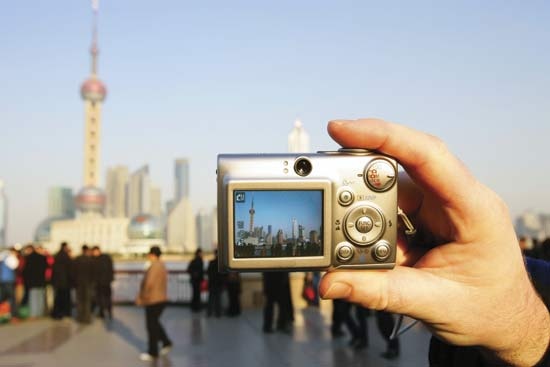digital camera
photography
 device for making digital recordings of images. Texas Instruments Incorporated patented the first filmless electronic camera in 1972. In 1981 Sony Corporation brought out a commercial electronic model, which used a “mini” computer disk drive to store information captured from a video camera. As the cost of electronic components declined and the resolution of the cameras improved, the Eastman Kodak Company began selling professional digital cameras in 1991. Kodak and Apple Computer (Apple Inc.), which supplied the software for transferring the digital images to a personal computer, introduced the first consumer model in 1994. Digital cameras soon gained market share, gradually relegating most film camera sales to cheap, disposable, single-use models.
device for making digital recordings of images. Texas Instruments Incorporated patented the first filmless electronic camera in 1972. In 1981 Sony Corporation brought out a commercial electronic model, which used a “mini” computer disk drive to store information captured from a video camera. As the cost of electronic components declined and the resolution of the cameras improved, the Eastman Kodak Company began selling professional digital cameras in 1991. Kodak and Apple Computer (Apple Inc.), which supplied the software for transferring the digital images to a personal computer, introduced the first consumer model in 1994. Digital cameras soon gained market share, gradually relegating most film camera sales to cheap, disposable, single-use models.Unlike film cameras, digital cameras do not have any mechanical parts (shutters) or chemical agents (film) and rarely have a viewfinder, which is typically replaced by a liquid crystal display (LCD). At the core of a digital camera is a semiconductor device, such as a charge-coupled device (CCD) or a complementary metal-oxide semiconductor (CMOS), which measures light intensity and colour (using different filters) transmitted through the camera's lenses. When light strikes the individual light receptors, or pixels, on the semiconductor, an electric current is induced and is translated into binary digits for storage within another digital medium, such as flash memory (semiconductor devices that do not need power to retain memory).
Digital cameras are commonly marketed by their resolution in megapixels (millions of pixels)—for example, a 2.1-megapixel camera has a resolution of 1,600 by 1,200 pixels (the “missing” megapixels are used for an analog-to-digital converter, or ADC). Kodak developed the first megapixel camera in 1986; it could produce a film-quality 5×7-inch (12.5 ×17.5-cm) print.
- Harriet Burbank Rogers
- Harriet Elizabeth Prescott Spofford
- Harriet E. Wilson
- Harriet Farley
- Harriet Goodhue Hosmer
- Harriet Jane Hanson Robinson
- Harriet Lane
- Harriet Mann Miller
- Harriet Martineau
- Harriet Monroe
- Harriet Quimby
- Harriet Starr Cannon
- Harriette Arnow
- Harriet Tubman
- Harriet Wiseman Elliott
- Harrigan, Edward
- Harriman, Edward Henry
- Harriman, Florence Jaffray
- Harriman, W Averell
- Harrington, James
- Harrington, William Stanhope, 1st earl of, Viscount Petersham of Petersham
- Harriot Eaton Stanton Blatch
- Harriot Kezia Hunt
- Harriot, Thomas
- Harris, Alexander